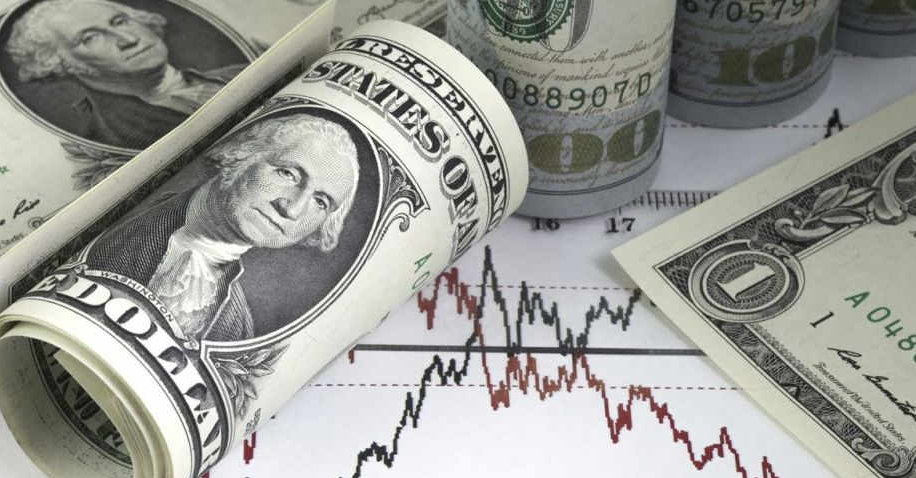The US dollar exchange rate may remain relatively strong in the short term

Entering 2024, the strengthening of the US dollar seems somewhat unexpected. But upon careful analysis, there are still multiple supporting factors behind it. Market participants believe that the US dollar is still likely to remain relatively strong in the coming months.
Due to the sudden "pigeon" sound from the Federal Reserve after its interest rate meeting in December last year, market expectations for a rate cut in March this year have sharply increased, and the US dollar has experienced a wave of decline. The US dollar index closed slightly lower for the entire year of 2023.
Unexpectedly, the US dollar exchange rate has been strengthening since the beginning of this year. As of February 16th, in just one and a half months, the US dollar index has risen by 3%, reaching a three month high.
Analyzing the recent rise in the US dollar, it is mainly influenced by both internal and external factors.
From the perspective of domestic factors in the United States, the slowdown in inflation did not meet expectations, and the expectation of the Federal Reserve's interest rate cut in March weakened.
The increase in housing costs and service industry prices has driven the US Consumer Price Index (CPI) to rise beyond expectations in January. In January, the CPI increased by 0.3% month on month, the largest increase since September last year; The year-on-year increase was 3.1%, higher than the market's generally expected 2.9%. The January PPI data released three days later also exceeded expectations, with a year-on-year increase of 0.9%, higher than the expected 0.6%; The month on month increase of 0.3%, expected to be 0.1%, has once again dampened market bets on the Federal Reserve's recent interest rate cut.
Bank of America's Global Research Department has stated that the CPI data further reinforces concerns about inflationary pressure caused by labor market tensions, and the likelihood of the Federal Reserve cutting interest rates in March and May has decreased. It is expected to start cutting rates in June. Greg Basuk, CEO of AXS Investments, believes that the current outlook is that the Federal Reserve seems more likely to postpone interest rate cuts until the second half of the year.
The Chicago Mercantile Exchange's Federal Reserve observation tool shows that the expected probability of no rate cut in March remains unchanged in market pricing, and the probability of no rate cut in May has decreased from 61% to 57%. June remains the time when the market pricing expects the Federal Reserve to start cutting rates.
The expected timing of the Federal Reserve's interest rate cut has clearly delayed the reduction of the spread between the US dollar and other currencies, and the market's correction in US dollar pricing has supported the recent trend of the US dollar.
However, the January retail data released by the US Department of Commerce Census Bureau decreased by 0.8% month on month, significantly weaker than market expectations of a decrease of 0.1% to 0.3%. At the same time, the retail data for December last year was also adjusted from a month on month growth of 0.6% to 0.4%, which to some extent alleviated market concerns about consumer overheating driving inflation. But analysts also believe that the weakening of retail sales in January may be related to the previous month's promotion leading to early consumption.
Despite the interference of weak retail sales, from foreign factors, the performance of the Japanese and European economies is even weaker, still providing support for the US dollar exchange rate.
The sluggish domestic demand in Japan, especially the decline in private demand, offset the positive driving effect of export growth on the economy, and the Japanese economy unexpectedly shrank for two consecutive quarters. After a month on month decline of 0.8% in the third quarter of last year, Japan's gross domestic product (GDP) fell by another 0.1% in the fourth quarter. Based on this, it can be preliminarily judged that the Japanese economy is once again experiencing a technological recession.
Bloomberg's survey of economists last month showed that most respondents had expected the Bank of Japan to launch its first rate hike since 2007 in April. However, the economic data fell short of expectations, adding uncertainty to the Bank of Japan's plan to exit its ultra loose policy. In the short term, the Bank of Japan may maintain its loose policy, which puts pressure on the yen exchange rate.
In Europe, the economic growth rate of the eurozone has been hovering around zero for six consecutive quarters. European Central Bank President Lagarde stated that economic activity will remain sluggish in the short term. The European Commission recently lowered its GDP growth forecast for the eurozone in 2024 from 1.2% to 0.8%, only slightly higher than the 0.5% growth rate in 2023.
Although the next interest rate action by the European Central Bank is likely to be a rate cut, the economic downturn has eased inflation concerns, and the European Central Bank is not in a hurry to take this action. In Lagarde's words, if the European Central Bank acts too quickly, inflation may rise again, or it may force the European Central Bank to tighten policies again, which would be a costly iteration.
Given that the US economy still maintains a relative advantage compared to other major developed economies, this round of US dollar strength is supported to some extent.
There are still some differences in the market regarding the future trend of the US dollar.
Paul Merkel, Global Head of Foreign Exchange Research at HSBC, believes that the US dollar will strengthen this year, but it will not be as strong as in 2021 and 2022. George Saravelos, head of global foreign exchange research at Deutsche Bank, said that the real debate is not the timing of the Fed's rate cuts, but whether the Fed's rate cuts will be smaller or larger than those in other parts of the world in the next two years. "We continue to believe that the risk is biased towards the Federal Reserve reducing its easing policy, which is beneficial for the US dollar's trend."
However, after the previous gains, the short-term upward momentum of the US dollar may be limited. The Pain Index, which tracks the positions of active forex traders in Citigroup Forex, shows that these traders have significantly reduced their bullish bets on the US dollar and remained largely neutral.
In the short term, without the influence of special factors, the US dollar will remain relatively strong against the currencies of other major developed economies. Given the uncertainty surrounding the economic performance and timing of monetary policy adjustments in various countries, the full year trend of the US dollar remains to be observed.
